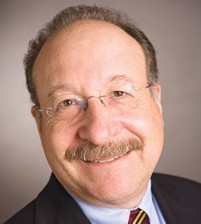Dubroff: Diablo Canyon nuclear plant could keep the lights on a little longer
Betting on Pacific Gas & Electric to get big things right has proven to be a risky gamble.
From deadly natural gas explosions to massive fires caused by faulty power lines to rolling blackouts, PG&E has more often gotten the big things wrong.
Which is why a recent study about the future of the Diablo Canyon Nuclear Plant near San Luis Obispo caught my eye. The study, authored by researchers from MIT and Stanford, argues that it could be more cost-effective to extend the life of the plant than to shut it down as scheduled, beginning in 2025, when its operating licenses from the Nuclear Regulatory Commission begin to expire.

From the Editor
As The Economist noted in a recent article, the 2018 agreement with regulators and environmental advocates to shut the plant when its licenses expires did not account for one of California’s worst droughts, the loss of hydro power as reservoirs dried up, and heat waves that are stressing power generating supplies, leading the burning of more fossil fuels.
Under these conditions, the study states, loss of Diablo Canyon, which provides 9% of California’s electricity without emitting any greenhouse gasses, could make California even more dependent on power production from natural gas.
It’s hard to base a major public policy shift on one academic study. And seismic risks, which came into sharp focus after the Fukushima nuclear plant disaster in Japan, will be a factor in any decision to extend the plant’s life.
To get the California Public Utilities Commission, the Nuclear Regulatory Commission, and other regulators and politicians to reverse course and allow the plant to continue to operate is going to take a bureaucratic shift of mammoth proportion.
But Diablo Canyon, which opened in 1985, has operated safely thus far and there may be ways to mitigate one of its worst impacts: the release of warm cooling water into the Pacific Ocean.
And the license extension does not have to be open-ended. The Biden administration is pushing forward with plans to site a large wind farm off the coast at Morro Bay. The $1.2 trillion infrastructure package, and state surplus money, could presumably be used to invest in battery storage and grid enhancements to make renewables a more consistent source of power.
In the end, Diablo Canyon’s twin generators probably have too much capacity to do the job, and ever-present seismic risk would argue against another 25 years of operations.
But a flexible license extension that would extend the plant’s life until Morro Bay and other wind projects come on stream, and until storage is adequate to cover shortfalls, seems worthy of more study.
The economic benefits of a phased wind-down of Diablo Canyon to the San Luis Obispo-Santa Maria area would be significant.
Employment would remain at or close to current levels, support for schools would likely continue and contracts with area businesses would remain or even increase. And nothing would stop planning to go forward for post-nuclear operations on land available for redevelopment after the plant closes.
Meanwhile, examples of unexpected climate impacts upending policy decisions abound. In Texas, the unexpected winter freeze cause massive power outages and a spike in natural gas costs largely because regulators never required pipeline operators to prepare for a possible freeze.
Meanwhile, the EU and Britain are finding out that the transition to renewables is not as easy as it looks on paper — especially when heat waves reduce wind power and drive-up demand. Germany’s decision to walk away from nuclear power makes it more dependent on Russia for natural gas.
Getting public policy decisions right is complicated and PG&E’s track record for understanding complexity is suspect. Climate change is a wild card.
Which is why California’s regulators, utilities, environmentalists and other stakeholders should re-examine what’s best for consumers as the clock on closing Diablo Canyon ticks down.
• Henry Dubroff is owner and editor of the Pacific Coast Business Times. He can be reached at [email protected].










